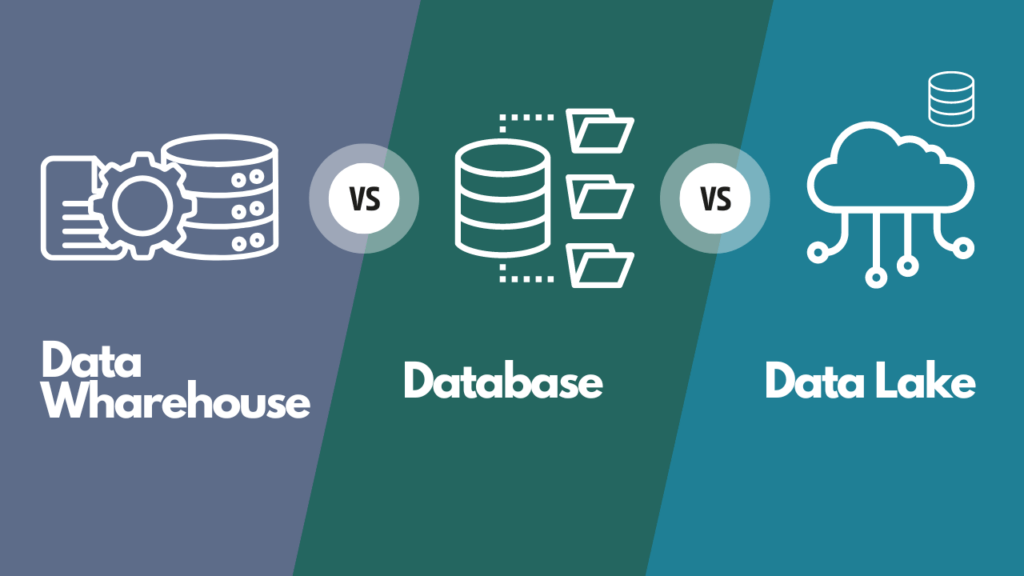Data Warehouse and differences between Database and Data Lake
In today’s data-driven world, companies collect information from a multitude of sources. But raw data, while valuable, needs structure and organization to unlock its true potential. This is where Data Warehouses come in.
This blog will delve into Data Warehouses, exploring their functionalities and how they differ from Databases and Data Lakes. We’ll also see how Qmantic utilizes Data Warehouses to empower businesses with actionable insights.

Overview
What is Data Warehouse?
A data warehouse is a centralized repository that stores integrated data from one or more disparate sources. It typically contains historical data organized in a structured format, optimized for querying and analysis. The primary purpose of a data warehouse is to facilitate reporting, analytics, and data mining, providing decision-makers with valuable insights into the organization’s operations and performance.
Data warehouses are designed to support complex queries and analysis tasks efficiently. They often undergo a process called Extract, Transform, Load (ETL), where data is extracted from various source systems, transformed into a consistent format, and loaded into the warehouse. This process ensures that the data in the warehouse is cleansed, standardized, and ready for analysis.
In essence, a data warehouse serves as a foundational component of business intelligence (BI) and analytics initiatives, enabling organizations to make data-driven decisions based on comprehensive and reliable information.
Data Warehouse vs. Database vs. Data Lake
While all three-store data, their purposes and functionalities differ significantly:
Databases
Designed for specific applications, databases excel at storing structured, current data optimized for fast retrieval. They follow a rigid schema, ensuring data consistency and enabling efficient transactions.
Data Lakes
Functioning as a central repository, data lakes store vast amounts of data in its raw, native format, regardless of structure. This flexibility allows for ingesting diverse data types – structured, semi-structured, and unstructured – ideal for large-scale data exploration and analytics.
Data Warehouses
Bridging the gap between databases and data lakes, Data Warehouses store historical and integrated data from various sources in a structured format. They follow a predefined schema optimized for data analysis, making it easier for business analysts to identify trends and patterns.


Here’s a table summarizing the key differences:
| Feature | Database | Data Lake | Data Warehouse |
| Data Structure | Structured | All Types | Structured |
| Data Source | Single Application | Multiple Sources | Multiple Sources |
| Data Purpose | Transactional | Exploratory | Analytical |
| Schema | Rigid | Flexible | Defined for Analysis |
Why Data Warehouses are Powerhouses for Business Intelligence
Data Warehouses offer several advantages for business intelligence:
- Subject-Oriented
Data is organized around specific business subjects, like sales, marketing, or finance, facilitating targeted analysis.
- Integrated Data
Data from multiple sources is transformed and cleansed to ensure consistency and accuracy.
- Historical Data
Data Warehouses store historical trends, enabling year-over-year comparisons and trend analysis.
- Fast Query Performance
The optimized schema allows for efficient retrieval of specific data sets for analysis.
These characteristics empower data analysts to gain a holistic view of the organization, identify business opportunities, and make data-driven decisions.
How Qmantic Leverages Data Warehouses
Qmantic recognizes the power of Data Warehouses. The platform seamlessly integrates with various data sources, including databases and data lakes. By extracting and transforming relevant data, Qmantic helps businesses build robust Data Warehouses optimized for analytics.
Furthermore, Qmantic’s self-service BI features empower business analysts and stakeholders to leverage the Data Warehouse directly. Users can create custom reports and dashboards, conduct ad-hoc analysis, and uncover valuable insights without relying on IT teams.
In conclusion, Data Warehouses act as the cornerstone of data-driven decision making. By transforming raw data into actionable insights, they empower businesses to optimize operations, identify trends, and stay ahead of the curve. Qmantic, through its data integration and user-friendly BI tools, unlocks the true potential of Data Warehouses, enabling businesses to gain a competitive edge in the information age.





